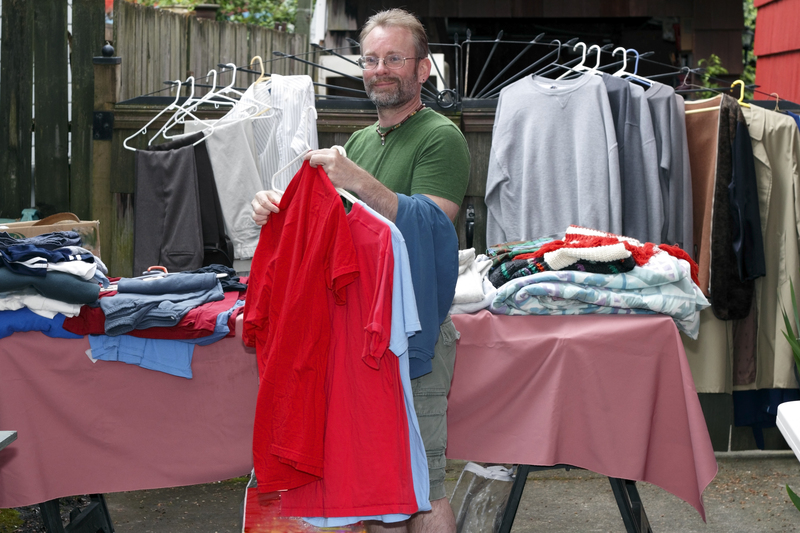Where to Take Damaged Pots and Pans for Safe Disposal
Are your damaged pots and pans cluttering your kitchen shelves? Whether it's a cracked non-stick pan, a warped stainless steel saucepan, or a rusty cast iron skillet, disposing of old cookware can be challenging. Simply tossing them in the trash is not environmentally friendly. So, where should you take your broken pots and pans for safe disposal? This guide will show you all the eco-responsible options, from recycling centers to creative repurposing ideas.
Understanding Why Proper Disposal Matters
Old cooking pots and pans are made from materials like aluminum, stainless steel, iron, ceramic, and even copper. These materials can have environmental repercussions if they're not disposed of correctly. Proper disposal ensures these metals stay out of landfills, are recycled or reused efficiently, and prevent potential toxins from contaminating the environment.
- Why not the trash? Standard curbside trash often leads your old cookware to a landfill, where it will take decades or even centuries to decompose.
- Reclamation of resources: Safely processing and repurposing metals helps reduce the environmental impact of mining new raw materials.
- Preventing contamination: Some pans (especially non-stick cookware) can release hazardous chemicals as they break down, making professional disposal even more vital.

Evaluating the Condition of Your Pots and Pans
First, determine the state of your items. Ask yourself:
- Are they cracked, chipped, or warped beyond use?
- Is there toxic damage such as flaking non-stick coatings?
- Could someone else benefit from these if they're still usable?
If they are damaged beyond repair or unsafe for cooking, it's time to look for disposal options. Otherwise, consider donation or reuse!
Where to Take Damaged Pots and Pans for Safe Disposal
1. Scrap Metal Recycling Centers
The best way to get rid of damaged metal pots and pans is through a scrap metal recycling facility. Most cookware is made from ferrous or non-ferrous metals, both of which are valuable and easily recycled.
- How to find a recycling center: Search online for "scrap metal recycling near me" or visit your city's municipal waste website to locate facilities that accept household metal goods.
- What they accept: Stainless steel, iron, copper, and aluminum cookware (including handles, lids, and sometimes even metal baking pans) are all eligible.
- Preparation tips: Remove any non-metal parts (plastic handles, glass lids) if possible to streamline recycling. Clean off excess food debris.
2. Curbside Recycling Programs
Not all municipal curbside recycling programs accept old pots and pans, but many do! Always check your local regulations before leaving cookware at the curb.
- How to check: Visit your city or county's recycling information page or call their waste management hotline.
- Special instructions: Some areas require you to place metal pots and pans directly into the recycling bin, others may ask you to bundle them or drop them off at a designated collection event.
- Non-stick and coated pans: Cookware with non-stick coatings may not be accepted everywhere due to PTFE and chemicals. Confirm with your local facility before recycling.
3. Household Hazardous Waste Facilities for Non-Stick Pans
If your cookware is non-stick and the coating is significantly scratched or flaking, it could release harmful chemicals like PFOA as it degrades. Some household hazardous waste collection events or facilities will accept these pans to ensure safe handling.
- Check your local government's environmental services website for hazardous waste drop-off days or permanent facilities.
- Label the pans and describe the damage when you bring them.
4. Donation Centers (If Still Usable)
If your pots and pans are gently used but you're upgrading, consider donation instead of disposal.
- Goodwill, Salvation Army, and local thrift stores - Accept gently used cookware in working condition.
- Homeless shelters and community kitchens - Often in need of serviceable kitchenware.
- Online sharing platforms (such as Freecycle, Facebook Marketplace, or Nextdoor) - Let your neighbors know you have free cookware available.
*Be sure to inspect the integrity and cleanliness of the items before donating. Damaged or unsafe cookware is best recycled or upcycled instead.
5. Manufacturer Take-Back and Mail-In Programs
Some eco-friendly brands and larger cookware companies offer take-back or mail-in programs for old cookware - an increasingly popular initiative to promote sustainability.
- Check the brand's website: Companies like GreenPan, Calphalon, and Made In sometimes run recycling or trade-in programs for cookware, even offering discounts on new products when you send your old ones in.
- Participation steps: Usually, you'll need to register online and receive a prepaid shipping label.
This is a great eco-conscious choice and helps drive industry support for recycling and circular economy efforts!
6. Specialty Recycling & Community Collection Events
Municipalities, recycling groups, or environmental organizations often host community recycling drives or Zero Waste events for household items that can't go in standard bins. This can include damaged metal cookware, especially larger items like stockpots.
- Look for local events through city websites, neighborhood groups, or environmental non-profits.
- Bring all your broken pots and pans, as well as other scrap metal household items.
Alternative Disposal Methods for Damaged Cookware
Creative Repurposing and Upcycling Ideas
Before sending your old cooking pots and pans to a landfill, consider creative reuse! Upcycling is both environmentally friendly and can be a fun DIY project.
- Planters: Turn a large pot or pan into a quirky outdoor garden planter.
- Storage solutions: Use deep saucepans, Dutch ovens, or roasting pans as unique organizers for tools, office supplies, or even as mail caddies.
- Candle molds or fire pit starters: Metal pans are ideal for crafts or for lighting small outdoor fires safely.
- Wall art: Paint or decorate lids and hang them as kitchen wall art or create a funky clock face.
Art Centers and Scrap Stores
Community art centers, maker spaces, or "scrap" stores may accept old pans and pots for reuse in projects, sculptures, or classes. Always call ahead first!
Contacting Appliance and Cookware Retailers
Some large cookware or home-goods retailers offer recycling programs or can provide information on where to take damaged kitchen equipment for responsible disposal in your area. Examples include:
- Williams Sonoma
- Sur La Table
- Local kitchenware or appliance outlets
Sell for Scrap Value
If your cookware is pure metal (such as cast iron, copper, or stainless steel baking sheets), local scrap yards may pay a small sum for it after weighing. This way, you not only dispose of them, but can earn a bit of cash in the process.
How to Prepare Your Pots and Pans for Disposal
Once you've chosen a destination for your cookware, make sure you're following best practices to prepare your damaged pots and pans for safe recycling or disposal:
- Clean thoroughly: Remove food residue, oil, or burnt-on messes. Most recycling centers prefer clean scrap to avoid contamination and improve processing.
- Remove non-recyclable parts: Unscrew or break off any plastic handles, knobs, or glass lids (unless accepted by your chosen facility).
- Label hazardous items: Mark non-stick, damaged, or chemically treated pans accordingly for safe handling by recycling teams.
- Bundle safely: If sharp edges or broken pieces could injure workers, wrap the items in paper or a box and label as scrap metal.

Frequently Asked Questions about Damaged Pots and Pans Disposal
Can I put old pots and pans in my household recycling bin?
This depends on local guidelines. Many curbside programs do not accept cookware due to size or metal type. Always check with your city's recycling program. If not accepted, take them to a scrap metal recycling center.
Are pots and pans considered hazardous waste?
Only cookware with significant non-stick coating damage or unusual materials (like Teflon or ceramic coatings containing lead) may be hazardous. Most plain metal pans are not hazardous, but should still be recycled properly.
What about glass lids or ceramic cookware?
Glass or ceramic components often have a separate recycling process:
- Most glass lids are not recyclable with household glass due to their composition, but some specialty facilities may accept them.
- Ceramic pans should be checked for lead or glaze toxicity before disposal. Seek out dedicated ceramic recycling programs.
Do any retailers accept trade-ins for damaged cookware?
Yes! Some brands periodically offer trade-in or recycling promotions. Check retailer and manufacturer websites for current programs.
Conclusion: The Eco-Friendly Way to Dispose of Damaged Pots and Pans
When your favorite frying pan finally gives up or a saucepot succumbs to years of use, don't let it become just another landfill statistic. Now that you know where to take damaged pots and pans for safe disposal, you can make a sustainable, responsible choice.
- Utilize metal recycling centers for efficient material reclamation.
- Contact manufacturers or large retailers for special recycling programs or mail-back options.
- Explore creative reuse, donation, and community programs when possible.
Proper disposal of old cookware is a simple step that helps conserve resources, prevent pollution, and supports greener communities. Next time you retire your trusty saucepan, remember: safe disposal is always in good taste.